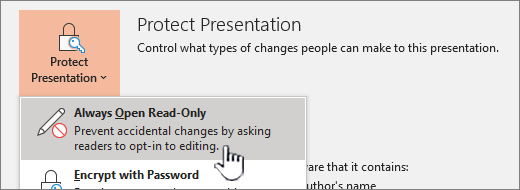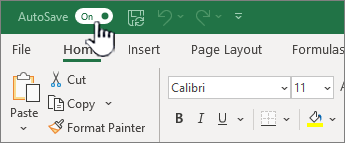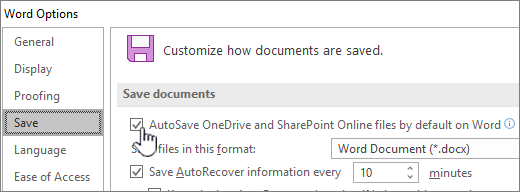"Save early, save often" is a thing of the past. Now there's AutoSave, which saves every few seconds so that your users don't have to.
AutoSave is enabled when a file is stored on OneDrive, OneDrive for work or school, or SharePoint in Microsoft 365. It automatically saves your users' changes to the cloud as they're working. And, if other people are working on the same file, AutoSave lets them see changes in a matter of seconds. Without AutoSave enabled, users collaborating on the same document at the same time will not be able to see each other in real-time and instead they will continue to see Updates Available when changes are made by others.
But, AutoSave also causes some changes in how your users will work with Office, so in this article we describe some of the more challenging scenarios as well as how to configure the AutoSave settings. We recommend that you communicate to your users these changes that impact how they work in Office.
Note: With AutoSave, there is no impact on the system performance. However, there will be higher network utilization as changes are uploaded as they are made instead of all at once when users make changes, which could impact people with limited bandwidth or high cost data usage, such as on a mobile hotspot.
Changing Workflows
AutoSave is helpful in most scenarios, but there a few cases where your users might need to change how they normally work and we want you to be prepared to help them. For each of the scenarios, we have outlined what the scenario is, what may go wrong and a recommendation for how to resolve it.
-
Starting from an existing file, making edits and then doing a Save a Copy to a new file - Anyone who starts from a previous file (for example last quarter's earnings report), edits, and then does a Save a Copy to start this quarter's earnings report will cause the changes to be saved in both files if AutoSave is on. We recommend that everyone do the Save a Copy before making any changes and have even added a reminder in the product when this happens. If a user makes accidental changes, they should use the Version History feature to restore the original document.
-
Performing "hypothetical" or "what-if" changes to a file - Anyone who opens a file and does some hypothetical analysis (such as forecasting the impact of market changes on the budget) with the desire to close the file without saving will have inadvertently saved all the changes to the file while AutoSave is on. We recommend turning off AutoSave while doing the hypothetical analysis and then turning it back on once the user is ready to save again.
-
Dashboards and Viewing Files with Sorts/Filters in Excel - Anyone who sorts or filters a dashboard while AutoSave is on will affect the view of everyone else in the file. If a file is meant to be a dashboard or used by multiple people with sorts and filters, we recommend setting the Read-Only Recommended property on that file using File > Info > Protect Workbook > Always Open Read-Only, so viewers of the dashboard won't save their changes unless they explicitly choose to edit the file.
-
Finalized or Published Files - Anyone who accidentally edits a finalized, published file with AutoSave on will save their changes to the file. Once a file has been finalized, we recommend setting the Read-Only Recommended property or Mark as Final property on the file, so accidental edits from viewers and readers of the file won't be saved.
Configuring AutoSave Settings In Office
AutoSave can be configured the following ways:
-
The owner of a file can set it to Always Open Read-Only to help prevent accidental edits. This can be done by setting the file to open in Read-Only Recommended (File > Info > Protect Document/ Workbook/ Presentation > Always Open in Read-Only) or by Sharing the file without allowing others to edit (File > Share > People with the link can edit and uncheck the Allow Editing box).

-
A user can turn AutoSave off for a file while it is open by clicking the AutoSave toggle. This disables AutoSave for the current document for that user. The next time the same user opens the document, AutoSave will be off. If they open a different document, AutoSave will not be affected by their choice in the other document.

-
A user can set AutoSave to be off by default for all files opened in that specific application (Word, Excel, PowerPoint) on that device.

Note: The user can still set AutoSave to be on for individual files by using the AutoSave toggle described above.
-
You, the admin, can set AutoSave to be off by default for all files opened in that specific application (Word, Excel, PowerPoint) using Group Policy.
Note: The user can still set AutoSave to be on by default in the application, or for individual files, using the settings described above.
Group policy settings for AutoSave
We are replacing the "Don't AutoSave files in Excel/PowerPoint/Word" Group Policy setting with the new "Turn AutoSave OFF by default in Excel/PowerPoint/Word" Group Policy setting.
If you use Group Policy in your organization, you can use a policy setting to turn off AutoSave by default. There are separate policy settings for Excel, PowerPoint, and Word.
For example, the policy setting for Word is named "Turn AutoSave OFF by default in Word" and can be found under the "Microsoft Office 2016\AutoSave" Policy Path.
To use these policy settings, make sure you've downloaded the latest Administrative Template files (ADMX/ADML) from the Microsoft Download Center.
Working with Local Files
AutoSave is not available when working with local files. The old AutoRecovery behavior is still available to periodically save copies of changed files to help minimize data loss in the case of an unexpected scenario, such as a crash.
However, we recommend IT admins to encourage users to save their files to OneDrive, OneDrive for work or school, or SharePoint in Microsoft 365 to enable AutoSave and avoid data loss. You can encourage adoption of OneDrive, OneDrive for work or school, or SharePoint in Microsoft 365 through user education and also by deploying Known Folder Move, which automatically syncs key folders to the cloud. This allows them to access files anywhere and not worry about losing important data.
See Also
Help prevent changes to a final version of a file
View previous versions of Office files
Help protect your files in case of a crash with AutoRecovery
Last updated June 4, 2019
Microsoft Office Tutorials: What It Administrators Should Know About Autosave >>>>> Download Now
ReplyDelete>>>>> Download Full
Microsoft Office Tutorials: What It Administrators Should Know About Autosave >>>>> Download LINK
>>>>> Download Now
Microsoft Office Tutorials: What It Administrators Should Know About Autosave >>>>> Download Full
>>>>> Download LINK ZE